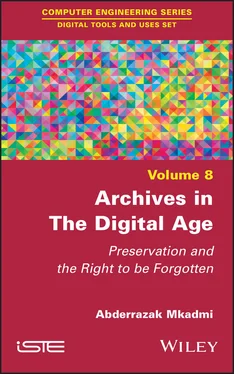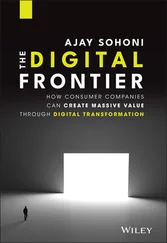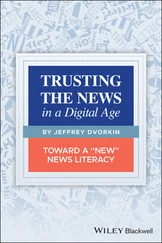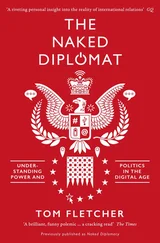– Fourth generation storage media are considered removable storage media (flash memory). This refers to USB (Universal Serial Bus), SD (Secure Digital), microSD, SSD (Solid-State Drive) and so on. The advantages of this type of media lie in its high speed access and storage capacities, which are close to those of a “classic” hard disk, the case of SSDs.
– Storage media under development are revolutionary storage media that should offer high storage capacity and high access speed, such as DNA (deoxyribonucleic acid), which is the hereditary genetic material of all living species on the Earth. According to the researchers, we estimate that the information stored on this support could be preserved over hundreds of thousands of years [CHU 12, COL 14]. Another equally revolutionary medium is quartz, which has proven its solid thermal resistance.
1.2.2.4.2. Strengths and weaknesses of storage media
By definition, a document storage medium must perform at least four functions:
– data integrity (all data without any modification);
– data accessibility (data must be accessible according to a classification scheme);
– data intelligibility (reading comprehension);
– data security (protection of information);
– data permanence (guaranteed conservation over time).
1.2.2.5. Dissemination of documents
The last step in electronic document management is to distribute the documents. This is seen as the ultimate goal of this technology. Any document that is digitized, indexed and stored is intended to be found in searches for several reasons, including reading it, processing it again and transmitting it to others. Documents could be disseminated in different ways using different technologies depending on the need. It could occur through display on screen or printing or communication through networks such as email or workflow 8. Searching for these documents occurs through a controlled query language or in natural language using a combination of keywords.
This diffusion operation can be automated through a workflow system that allows modeling of all the steps and actors involved in the ERM process. This workflow system optimizes the management, processing and communication of documents within the company. It also saves time for all employees by automating all repetitive and tedious tasks. Each employee is thus able to handle a large number of requests and concentrate on activities with high added value.
If ERM involves all types of documents and is essentially concerned with the ease of daily records management, Records Management (RM) is essentially concerned with the management of archival documents (records) that provide evidence of a company’s activities.
The concept of records management has its origins in the late 1940s in the United States based on the theory of archiving for the benefit of producers (Schellenberg in the United States and Pérotin in France). In the mid-1990s, an Australian RM standard was very successful and later became ISO 15489 in 2001, being revised in 2016. This standard defines RM as “a field of organization and management concerned with the effective and systematic control of the creation, receipt, retention, use and ultimate disposition of records, including methods of securing and preserving evidence and information related to the form of records”.
Applying the ISO 15489 standard essentially consists of:
– identifying documents that are binding for the company (records), whatever their format and medium;
– managing the documents throughout their lifecycle, in order to protect them and make them accessible over time. This management includes the organization of documents, their indexing, their conservation and the procedures for transmitting them.
In other words, the purpose of the RM is to guarantee the existence, accessibility, authenticity, reliability, integrity and usability of all documents.
The 15489 standard “complements the ISO 9001 (2000) quality management systems and ISO 14001 (2000) environmental management standards. Indeed, while these standards contain requirements for the production of documents known as ‘quality’ documents, to attest and testify to the activities of an organization, they do not contain any precision on what specifically constitutes a ‘quality document’. These clarifications are contained in ISO 15489, which aims to implement standards of quality and excellence in the management of routine and intermediate records in organizations of all categories” [COU 06].
1.3.1. Structure of standard 15489
Standard 15489 (2001 version) is presented in two parts, the first of which presents the guiding principles (concepts and principles) – ISO 15489-1, with the second presenting the guidelines (practical guide).
ISO 15489-1:2001, revised in 2016, determines the guiding principles and concepts on which the implementation of methods for the creation, capture and management of business records is based. These concepts and principles relate to business records with their metadata and document systems, their control, creation and management processes, as well as policies on accountability, monitoring, training and so on [ISO 16].
This first part of ISO 15489-1:2016 applies to all business records regardless of their structure, date, format and the technological environment in which they are created.
The second part of ISO 15489-2:2011 9represents a practical implementation guide for the first part ISO 15489-1 for records managers and archivists in general. This guide “provides a methodology that will facilitate the implementation of ISO 15489-1 in all organizations that need to organize and manage their archival records. It provides a general overview of the processes and considerations for organizations wishing to comply with ISO 15489-1” [ISO 11].
1.3.2. Content of the standard
As noted above, ISO 15489 is primarily intended to:
– produce and preserve documents while maintaining their authenticity, reliability, integrity and usability in operations in an effective and efficient manner;
– create a relevant record of the different activities of the company;
– protect and defend the company’s rights.
By “authenticity”, we mean the possibility of proving at any time that a record “is what it purports to be”, that it was created or received by the person claiming to be its creator or receiver, and at the time it purports to have been created or received. In order to ensure this characteristic of authenticity, a procedural manual must be in place to control the creation and/or receipt of records, their transmission, preservation methods and ultimate disposition.
Reliability refers to the exact representation in the document of the activities and operations described in its contents. In order to guarantee this characteristic, the document must be created at the time of the activity by the people who carried out the activity, and must contain all the information that makes it possible to carry out the same activity again and obtain the same result.
Integrity , on the other hand, is about protecting the document from any possible modification or alteration without documented authorization. In order to do this, a system must be in place to identify and keep a record of every action that affects the document, including consultation, modification and deletion.
Usability consists of maintaining the usability of the document at all times, and therefore it must be kept in a format and in a medium that guarantees its reusability for as long as possible. A policy of migrating to another medium must therefore be established periodically.
Читать дальше











